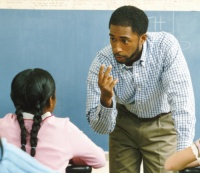news@epi.org
(202) 775-8810
High-poverty schools are hit the hardest
(Black PR Wire) - A new report by EPI Economist Emma García and Research Associate Elaine Weiss finds that schools are finding it increasingly difficult to attract and retain staff, which are both due to a growing teacher shortage and adding to the shortage. Teachers are leaving their schools and the profession at rates higher than professionals in other occupations and larger than in previous years— and fewer people entering the teaching profession than in recent years.
“The acute teacher shortage schools have been suffering from in the past few years really jeopardizes the quality of the education that American students are receiving,” said García. “Schools can’t staff themselves with teachers appropriate to their needs and who would better serve their students. This trend has been worse for students at high-poverty schools.”
When polled about the 2011–12 school year, principals responded that, a year later, 13.8 percent had left their school. Within this group, almost half left the school to teach at a different one and a slightly larger group had left teaching all together.
In addition to the high rates of turnover and attrition, the number of individuals actively on track to pursue a career in teaching has significantly declined from 2008 to 2016. During that time, there was a 37.8 percent drop in people enrolling in teacher preparation programs, a 27.4 percent drop in people completing teacher preparation programs, and a 15.4 percent drop in total education degrees awarded.
Given these trends, it is not surprising that principals report difficulties in filling vacancies in schools. In 2015–16, over one-third of schools were having trouble filling a vacancy, compared to fewer than one-in-five during the 2011–12 school year.
The authors found that these struggles schools face to staff themselves properly are hurting the teaching workforce by making it less experienced overall, driving some fully certified teachers out of the profession, and causing staff instability—and the problem is worse for high poverty schools. For example, the overall share of newly hired teachers was 11.2 percent in the 2015–16 school year. However, it was 10.1 percent in low-poverty schools versus 12.1 percent in high poverty schools. Similarly, the overall share of all teachers who are newly hired and in their first year of teaching was 4.7 percent, but just 3.7 percent in low-poverty schools, compared to 5.3 percent in high poverty schools.
“Kids in high-poverty schools are getting hit hardest by the teacher shortage,” said Weiss. “Clearly we need policies that help more passionate people to become credentialed teachers and make a career of public education, and support those who are already teaching so that they can progress their careers.”
This is the second report EPI is releasing in our series on teacher shortages. The first paper in this series established that current national estimates of the teacher shortage likely understate the magnitude of the problem: when issues such as teacher qualifications and the unequal distribution of highly qualified teachers across high- and low-poverty schools are taken into consideration, the teacher shortage problem is much more severe than previously recognized.

